“I hate Google, I can’t ever find anything,” says a colleague (name withheld). Having grown up organizing files and folders on floppy disks and hard drives, I can find most things. I spent most of my time at the command line, typing in text commands to copy, move, and delete files and folders. Those experiences, beginning at age 13, have served me well. However, the advent of cloud storage and obscure file saving protocols confuse many. Let’s take a look at some ways you can improve your file management skills.
First, let’s review findings from a The Verge article, File Not Found by Monica Chin.
Key Findings
College professors are encountering a growing problem with their students. Monica Chins notes the following:
The concept of file folders and directories…is gibberish to many modern students.
The problem isn’t only with college students. I have seen it firsthand on the desktops of teachers, directors, and colleagues in K-12. The fact is, they lack the mental schema for organizing digital files into folders. It’s too easy to create a file wherever they may be on their device or the cloud, then forget about it. When they need to locate it again, who knows?
Lacking digital organizational skills, educators and students resort to other approaches. Here are a few common scenarios I have personally seen.
Dysfunctional File Management Scenarios
Some may argue that whatever works, that’s what you do. But such solutions to file management problems can backfire. Before I share an approach and digital tools that make sense, let’s revisit a few that don’t.
Scenario #1: Print to PDF
In one situation, a teacher completing the Texas Reading Academy online saved her documents to the default Download folder, so that there were soon hundreds of files to sort through. It was almost easier to go back to the source and save the item again than to move it to the top of the list (chronological sort).
Scenario #2: Snap a Photo with Your Smartphone
Some see Google/Apple Photos apps offer a better, visual way of content management. Instead of saving a file to a specific location, they snap a photo of it. When they need the content of the file, they scroll through the Photos app, zooming in as needed.
How many times have you seen someone snapping pictures of their computer screen at work? They weren’t documenting a heinous email. Instead, they were creating a visual archive.
Scenario #3: Save to Desktop
A common scenario, this one involves people putting all their files on the desktop of their device. I’ve seen some computers’ hard drives fail under the strain. This results in a catastrophic data loss.
How can you avoid this? Take advantage of any one of the following techniques. I’ve used them all with success.
Two Tips to Better File Management
Organizing files and folders since I was a youngster, I have found that the easier the system, the better. Easier systems are those that don’t expect me to remember where I put stuff. To ease my mind, I have relied on one or both of these tips below.
Tip #1: Organize by Year
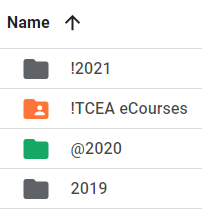
Many of create an amazing amount of content each year. Keeping track of it can be quite difficult. In the old days, people organized content by topic. This presumably made it easier to find with a few files. The truth is, organizing by topic results in a huge mess of folders and files.
Instead, organize by year. Create a folder (e.g. 2022, 2021, 2020), then anything you make, drop it in that folder. Put related files together. For example, say you have a word processing document with an embedded chart. Put the document and the spreadsheet in a folder together.
If folders are tough, give them the same prefix for their filename, such as “Project123_.” This ensures they appear together in the alphabetical list of files. This also makes the files findable.
One more suggestion: Try creating an index document of all the files you have. This is easy to do in Google Docs or on your computer.
Tip #2: Try Inbox Zero Approach
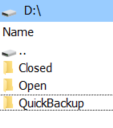
Most people have trouble remembering what they have and whether it’s worth keeping. When you can go out on the web to find anything, you have to decide what’s essential or not. Inbox Zero uses a simple organizational principle for email. This is a variation on that system.
On my hard drive, I have two overarching categories. They include the following:
- Closed folder
- Open folder
You can call your folders anything, but I wanted simple words that I didn’t have to think about much. The Closed folder has sensitive data, data I have encrypted. It includes my medical records, contracts, anything else I wouldn’t want anyone to see. The Open folder has everything else. Now, in each folder, I have more folders that I dump everything into.
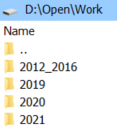
It looks like this (folder names shown only):
- Closed
- Family
- 2021
- 2020
- 2019, etc.
- Work
- 2021
- 2020
- 2019, etc.
- Family
The Open folder has the same organizational structure. Again, I don’t want to spend a lot of time thinking about how to place files. I’d rather spend my decision-making power on more important tasks. The reason I made it this way is that I wanted a quick way to back up important files from my computer. Anything I am working on this year (2021), goes into the 2021 Work folder. If it’s personal, it goes in the _Open->_2021 folder. See how easy that is?
Of course, anything I put in the Closed folder, I encrypt. You may not want to mess with that. You could organize by year, then drop encrypted files in with unencrypted items. Keep it as simple as you need to.
Get a List of Files and Folders
Need to know where everything is? If on Windows, you can do this several ways.
Approach #1: Tree
Open the CMD line (type “cmd” in the search bar at bottom right), then when you get to the command line, type the following:
tree /f /a > file.txt.
The file.txt file will contain a hierarchical listing of all the files on your device, as shown below.
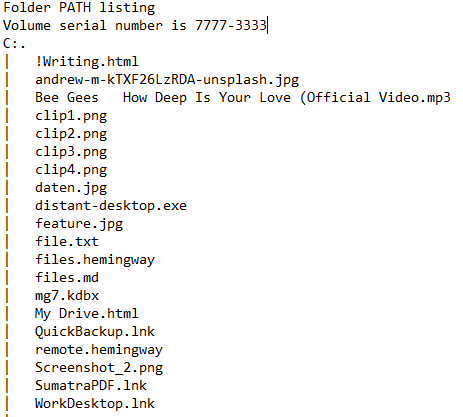
Approach #2: Dir
Another CMD line friendly approach is to use the Dir command. Open the CMD line and type:
dir c:\ /s /b /oe /a-d >index.txt
It will give you a file list inside a text document that you can review.
Approach #3: Directory Lister
If the command line approaches aren’t attractive, try Director Lister. This is a program you get in the Microsoft Store (free), that will index your folders and devices. Initial indexing will take a while, depending on the size of your storage device(s).

Once complete, you will be able to copy and paste the list of files stored on your computer’s hard drive.
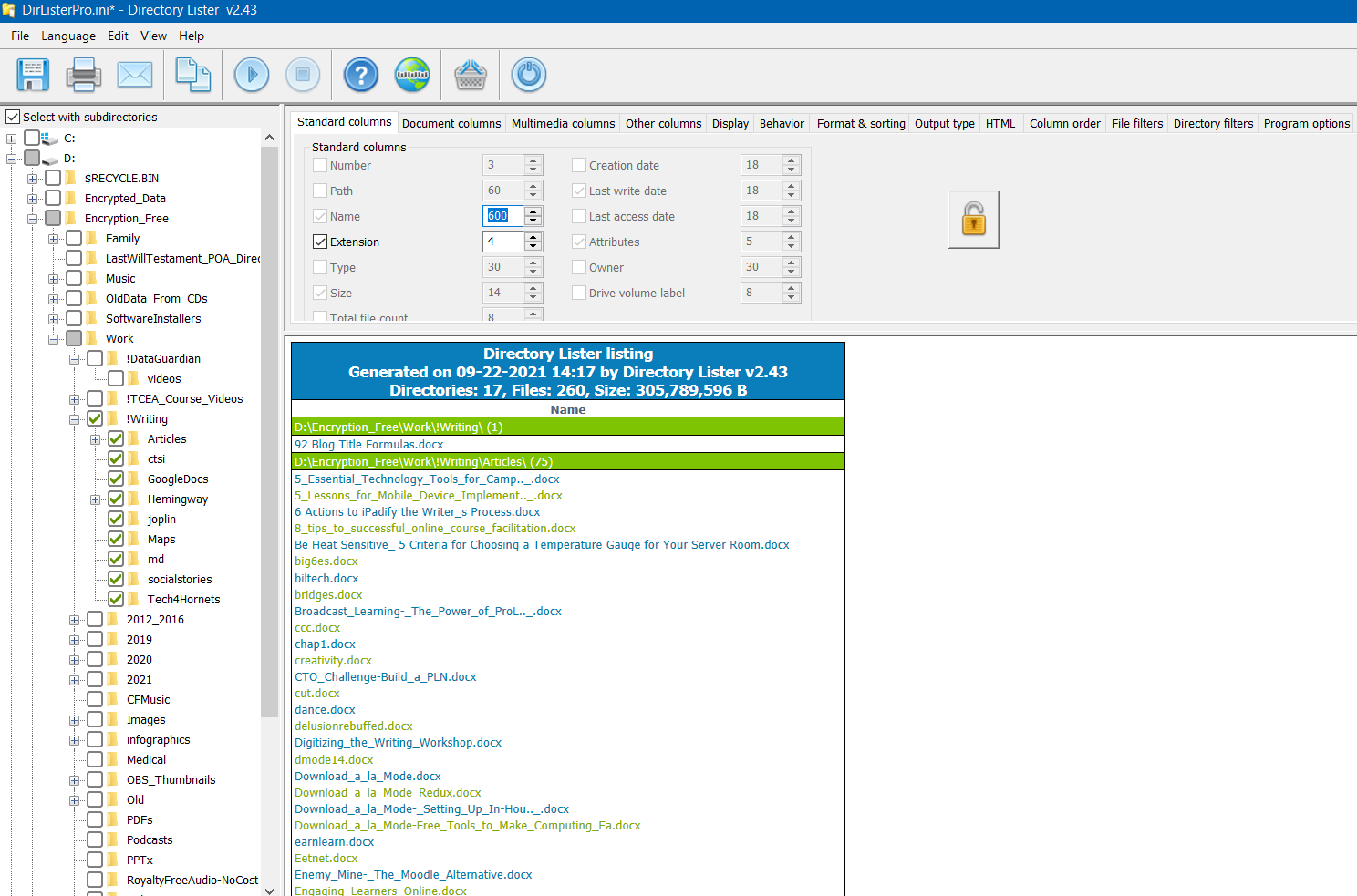
What’s great is that you can get a file listing (see above) that is clickable. This makes it easy to search and find files for those located on your device.
And Directory Lister works with Google Drive for Desktop. You can see part of my Google Drive for Desktop (Google Workspace for Education) below:
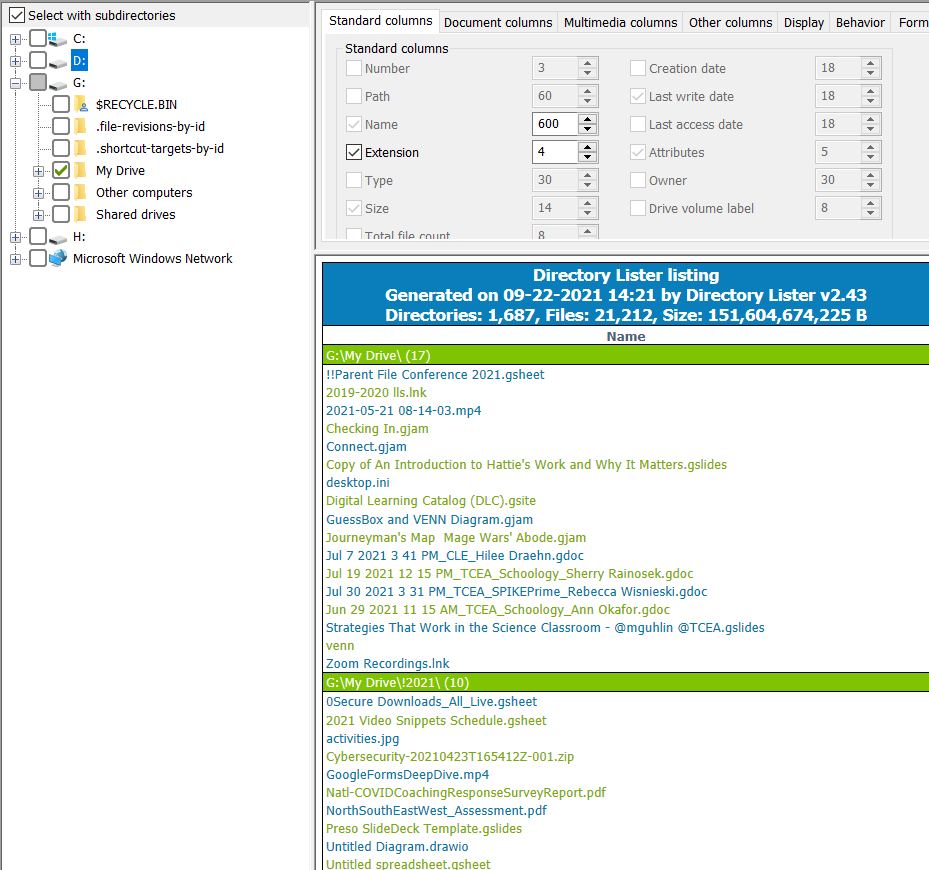
That means, if you don’t know where a file is on Google Drive for Desktop, you can find it with Directory Lister. See a search for a document below:

What’s more, you can export the file and then pull it up in your internet browser to click on it. When you click on it, the file will open if it is not a Google document (e.g. *.gsheet, *.gslides). For example, PDFs, MP4s, and others will open in your browser. That’s simple file management!
More File Management Tools
Looking for more file management tools? Once you get into organizing files and folders on your computer or device, you may find you like it. I use several different tools, depending on what device I am on.
Here are my favorite digital tools by device:
- Windows 10? Use Free Commander. I have mentioned it before in my Three Tips to Organize Google Drive blog entry. What’s more, I became a lifetime donor, which gives me free updates for the lifetime of the product.
- Mac? Use muCommander. The free muCommander works on Windows as well, so if you work on both platforms, you may want to use one tool.
- Android? Cx File Explorer. This easy-to0use, simple, and no-cost file manager makes navigating the guts of your Android device a cinch.
- iOS? Readdle’s Documents.On iOS, you can’t jump between files and folders like you can on other devices, but you can put all your files and folders in one app. Readdle’s Documents is that app, and the best file/folder manager around for iOS. You can also read ebooks, play music, connect to cloud storage, and use WiFi transfer with it. It’s the Swiss Army knife of file managers on iOS.
The start of a new year is a great time to get your digital life organized. A few hours now will save you years of anguish later.
Feature Image Source
Photo by Mitchell Luo on Unsplash

